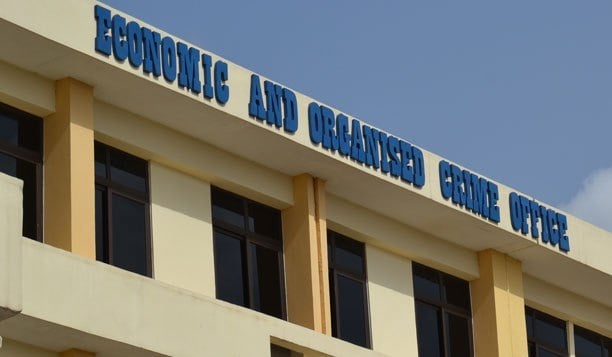
By Joshua Worlasi AMLANU & Ebenezer Chike Adjei NJOKU
Government is preparing to lean heavily on domestic investors to finance its 2026 budget, a strategy analysts say will test market appetite after two years of tight liquidity and missed Treasury targets.
Government plans to raise GH¢71billion from the local market next year, supported by a return to benchmark bond issuance and new debt-management reforms aimed at restoring confidence.
The 2026 budget projects revenues and grants of about GH¢268.1billion, roughly 18 percent higher than 2025. Expenditure is expected to reach GH¢302.5billion, leaving a deficit of GH¢34.4billion or 2.2 percent of GDP.
In reaction to the 2026 budget, Apakan Securities said the fiscal targets show commitment to consolidation but warned that the “near-20 percent revenue growth” goal may be difficult to achieve, given rigid spending pressures.
A major component of the budget is restructuring the VAT system, including a unified 20 percent rate, removal of VAT on mineral exploration and scrapping the COVID-19 levy. The firm said these measures are meant to ease compliance and broaden the base, but the changes could complicate revenue expectations.
Government’s borrowing plan comes at a time when liquidity in the financial system has been constrained by the Bank of Ghana’s aggressive mop-ups. Treasury sales have missed targets by a cumulative GH¢20.49billion so far in 2025, as the central bank sterilised more than GH¢307 billion, cumulatively, in excess liquidity to bring inflation down. The policy has succeeded in cooling price growth with headline inflation falling to 8 percent in October, its lowest in more than four years – but it has also tightened funding conditions for government securities.
In its recent market update for October 2025, Black Star Group highlights that the scale of liquidity absorption has significantly tightened conditions even though it has helped calm inflation. Money supply growth slowed to 16.6 percent in August from above 25 percent a year earlier, leading banks and fund managers to favour short-term instruments. In October, accepted bids barely exceeded maturities and 91-day bills remained the most demanded tenor.
Against that backdrop, the finance ministry is signalling a shift toward longer-dated borrowing. Authorities plan on resuming benchmark bond issuance in 2026 to rebuild the yield curve and deepen liquidity after a long period of limited activity following the domestic debt exchange. The strategy focuses on lengthening maturities, reducing rollover risks and smoothing repayment obligations. Measures such as buybacks, bond exchanges and targetted cash operations will be deployed to manage the maturity profile and lower interest costs.
Finance Minister Cassiel Ato Forson told parliament that 2026 marks “a new chapter” in Ghana’s debt management, moving from crisis response to resilience-building.
He said government wants to “borrow smarter” and ensure that every cedi borrowed contributes to growth and sustainability. A fully operational Ghana Sinking Fund is expected to act as a buffer for future repayment needs, with contributions drawn from annual budget allocations, investment income and recoveries.
Analysts at Apakan Securities said government’s return to the domestic bond market is unlikely to cause major disruptions to yield, pointing to stable macroeconomic conditions and liquidity levels that should sustain participation. They expect Treasury and bond yields to remain steady early next year, with investors gradually shifting from bills to bonds as clarity on the issuance programme improves.
Another key reform is overhauling the Primary Dealer and Bond Market Specialist framework. Only institutions with strong capital, technical competence and credible governance records will qualify. Politically exposed entities will be barred entirely.
The finance minister said the aim is to restore integrity in the market’s intermediary system, noting that the past conflicts of interest “will be a thing of the past”.
Even with tighter controls, analysts say demand risks remain. Investor caution persists due to liquidity constraints and lingering balance-sheet pressures across the financial system. Borrowing costs have risen slightly, with October’s 91-day, 182-day and 364-day bills averaging 10.8 percent, 12.5 percent and 13 percent respectively.
Apakan Securities maintains a cautiously optimistic outlook for 2026, saying the funding plan could succeed if policy discipline holds. The firm stressed that sustained revenue mobilisation and expenditure control will be crucial for maintaining investor confidence as government reopens the bond market and leans more heavily on domestic financing.
The post Investor appetite to be tested, as domestic market anchors 2026 borrowing appeared first on The Business & Financial Times.
Read Full Story






















Facebook
Twitter
Pinterest
Instagram
Google+
YouTube
LinkedIn
RSS